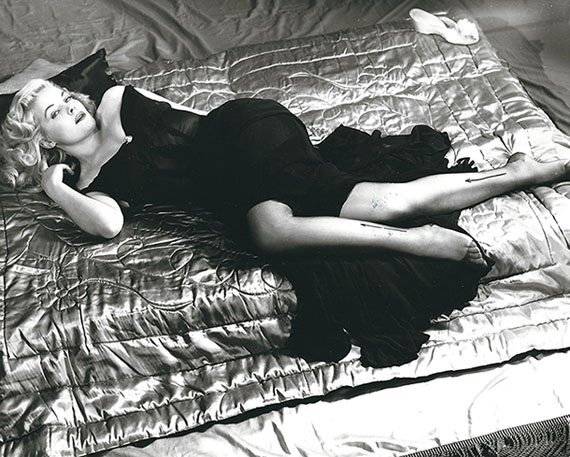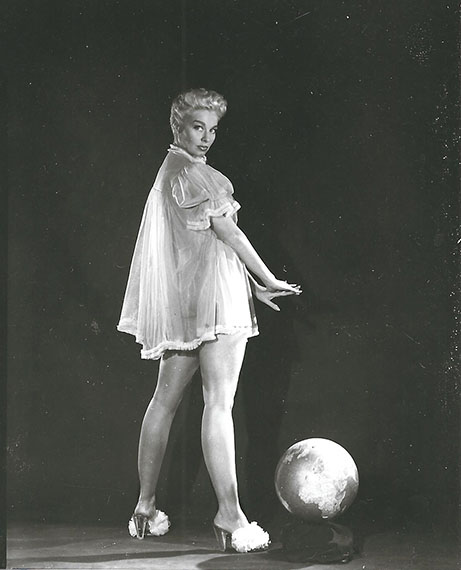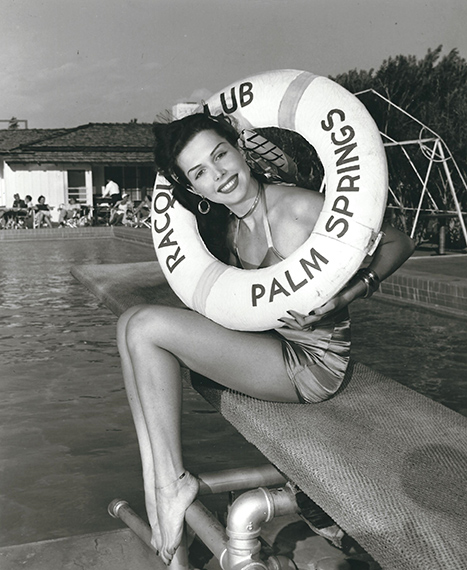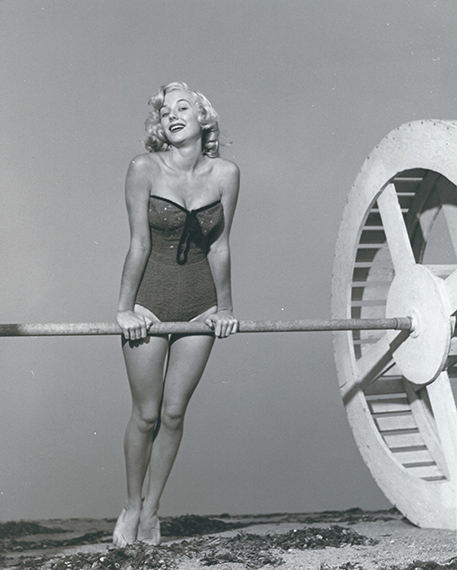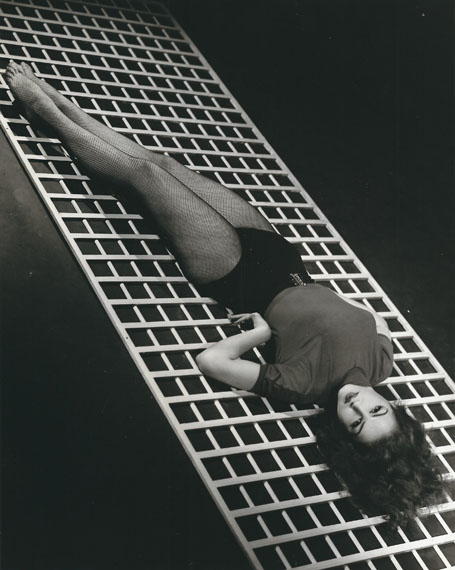
Bruno Bernard (Bernard of Hollywood) »
Girls, Girls, Girls !!!
Exhibition: 7 Sep – 12 Oct 2019
Sat 7 Sep 19:00 - 21:30
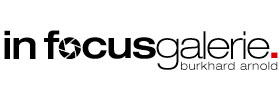
in focus Galerie
Hauptstr. 114
50996 Köln
+49 (0)177 -3202913
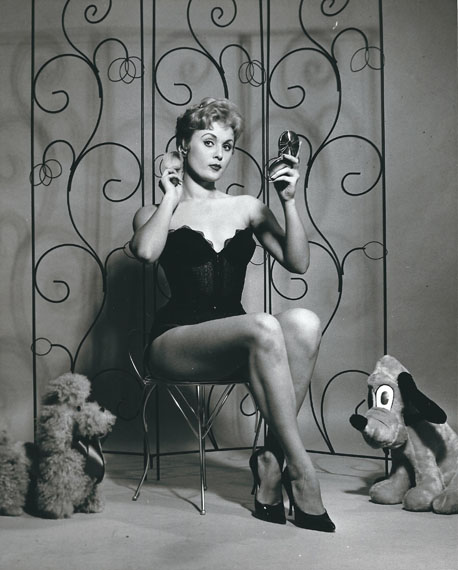
Bernard of Hollywood
"Girls, Girls, Girls !!!"
Exhibition: 7 September – 12 October, 2019
Opening: Saturday, 7 September, 7-9:30 pm
The exhibition is dedicated to the exiting Pin Ups and girls' pictures of the german-american photographer Bruno Bernard, better known as Bernard of Hollywood (1911-1987).
In 1934 Bernard promoted in criminal psychology in Germany and emigrated 1936 to the USA because of hisJewish ancestry. There he photographed in Los Angeles since 1938 and opened his studio two years later in Hollywoods Sunset Blvd 9055, where he run succesfully the studio for twentyfive years.
At this place he photographed many aspiring Hollywoodstarlets, but also many great film stars of his time. Bernard is considered a discoverer of Marilyn Monroe, because she (who worked under her birthname Norma Jean Baker) got her first film contract through his contacts.
Carole Kismaric, the curator of the exhibition "Fame after Photography" of the Museum of Modern Art, NY, wrote in the exhibition catalog: "Bernard had a way of making his subjects seem more human [than other pinup photographers]. When you see his pictures, you want to stop and look at them because of the obvious connection between the subject and the camera."
(Los Angeles Times, 2002)
The in focus gallery in Cologne purchased a part of the estate and presents about 70 selected works next to personal documents and rare sketches of the creation of single works in the exhibition "Girls, Girls, Girls". These artworks mostly are vintage prints that had been printed between 1946 and 1960.
A special attention will be paid to Bernard's muse Lily St. Cyr, probably the most famous exotic dancer of this time and original photographs of his book "Guide to pin-up photography" published in 1950.
A Pin-up is a full-lenght picture which portrays of pretty, young women in different poses. In most cases these picutres contain a narrative, sentimental, romantic or patriotic aspect. They show erotic scenes, but rather implicativ than unveiling. Even if they allow insight, for example a blowing dress in the wind, they leave the imagination to the viewer and most of the time do not really show something. Usually Pin-up girls are not presented naked, but in exceptional cases they are partly or completely naked. The model wears figure-accentuating garments which she can wear out of house (for example a swimsuit, a sportdress or a short dress) or something more provocatively and intim like a negligé or a dessous.
First Pin-ups had been sketched pictures which were stipped off by photography during the 1940s. Exspecially Pin-up photographies became famous during World War II. American soldiers associated them with their homeland and pinned these photographes on their wall unit. Pin-ups were also published in reputable journals and magazines like Life, New York Times etc., because they were part of the US-american everyday art and culture. Because of that Pin-ups are such extraordinary and interesting and did not loose their faszination since the 1920s until today (reference to Wikipedia). Bernard of Hollywood is one of the major photographers of this genre.
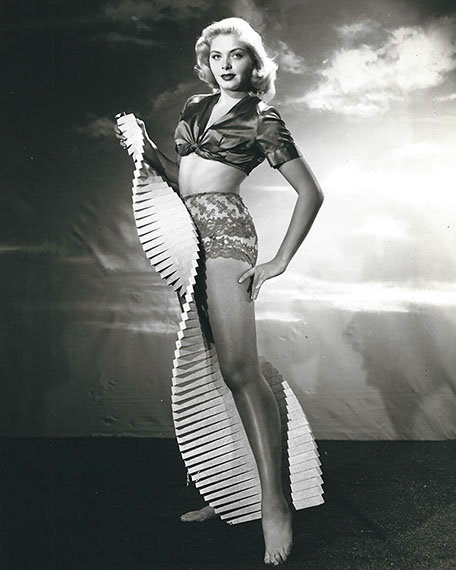
Bernard of Hollywood
"Girls, Girls, Girls !!!"
Ausstellung: 7. September bis 12. Oktober 2019
Eröffnung: Samstag, 7. September, 19-21:30 Uhr
Die Ausstellung widmet sich den aufregenden Pin Up- und Mädchenbildern des deutschamerikanischen Fotografen Bruno Bernard, auch Bernard of Hollywood (1911-1987) genannt.
In Deutschland promovierte Bernard im Jahr 1934 in Kriminalpsychologie und emigrierte, aufgrund seiner jüdischen Abstammung, 1936 in die USA. In Los Angeles fotografierte er ab 1938 und eröffnete 1940 sein Studio in Hollywood auf dem Sunset Blvd 9055, das er 25 Jahre erfolgreich betrieb.
In seinem Studio fotografierte er viele aufstrebende Hollywoodsternchen, aber auch viele große Filmstars seiner Zeit. Bernard gilt als Entdecker von Marilyn Monroe, da sie durch seine Kontakte (die damals noch unter ihrem Geburtsnamen Norma Jean Baker arbeitete) ihren ersten Filmvertrag erhielt.
Carole Kismaric, Kuratorin der Ausstellung "Fame after Photography" im Museum of Modern Art schrieb in ihrem Ausstellungskatalog: "Bernards fotografischer Stil ließ die Mädchen menschlicher erscheinen [als die anderer Pin Up-Fotografen]. Die offensichtliche Verbindung zwischen Model und Kamera lässt den Betrachter innehalten und diese intensiver betrachten." (Los Angeles Times, 2002)
Die in focus Galerie in Köln erwarb einen Teil des Nachlasses und präsentiert in der Ausstellung "Girls, Girls, Girls" rund 70 ausgewählte Arbeiten, zumeist Vintage Prints, die zwischen 1946 und 1960 vergrößert wurden, neben persönlichen Dokumenten sowie rare Skizzen zur Entstehung einzelner Arbeiten. Schwerpunkte der Ausstellung sind Arbeiten über seine Muse Lily St. Cyr, die wohl legendärste Striptease Künstlerin in dieser Zeit und die Originalvorlagen zu seinem schon 1950
veröffentlichtem Buch: "Anleitung zur Pin Up Photography".
Ein Pin-up ist ein Ganzfigurenbild mit hübschen, jungen Frauen in verschiedenen Posen. Meist haben diese Bilder erzählende, sentimentale, romantische oder patriotische Aspekte. Sie zeigen Szenen häufig erotischer Natur, aber eher andeutend als enthüllend. Selbst wenn scheinbar Einblicke gewährt werden, z.B. unter einen vom Wind empor gehobenen Rock, sind diese der Fantasie des Betrachters überlassen und bilden nichts wirklich deutlich ab. Normalerweise sind die Pin-up-Girls leicht bekleidet, es werden aber in Ausnahmefällen auch ganz oder teilweise nackte Mädchen dargestellt. Das Modell trägt entweder ein figurbetontes Kleidungsstück, das sie außer Haus tragen kann (z. B. Badeanzug, Sportdress oder ein knappes Kleidchen) oder etwas Provokantes, Intimes wie ein Negligé oder Dessous.
Pin-ups waren zunächst gezeichnete Bilder, die ab den 40er Jahren immer mehr und mehr von der Fotografie abgelöst wurden. Besonders populär wurden Pin-up Fotografien in Amerika im zweiten Weltkrieg. Für die vielen amerikanischen Soldaten im Ausland bedeuteten, die oft an ihre Schrankwände aufgehängten Fotos, eine tiefe emotionale Verbundenheit mit ihrer Heimat. Pin-ups wurden auch in den großen seriösen amerikanischen Magazinen wie Life, New York Times etc. veröffentlicht, da diese als Teil der USamerikanischen Alltagskunst und Kultur angesehen wurden. Pin-Ups sind deswegen so besonders und interessant, da sie im Laufe ihrer Entwicklung seit den 1920er Jahren bis heute nichts an ihrer Faszination eingebüßt haben (siehe auch Wikipedia). Bernard of Hollywood gilt als einer der bedeutentsten Fotografen dieses Genres.
